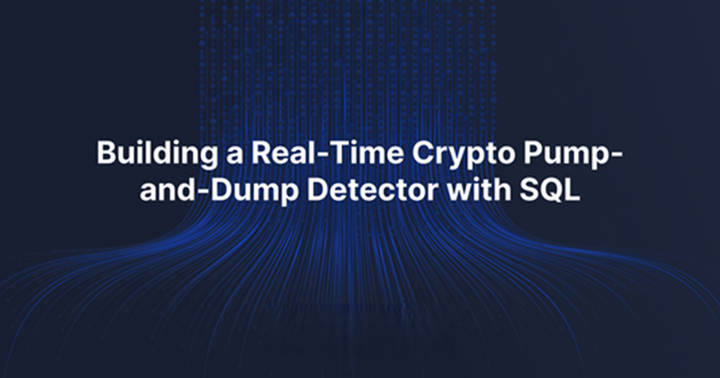狙击机器人Python开发教程
在本教程中,我们将使用Python和Web3.py构建一个狙击机器人(Sniper Bot)来监控和交易流动性对,当 Uniswap 上创建新的流动性池时,狙击机器人将进行交易。

一键发币: x402兼容 | Aptos | X Layer | SUI | SOL | BNB | ETH | BASE | ARB | OP | Polygon | Avalanche
构建一个狙击机器人(Sniper Bot)来监控和交易去中心化交易所的流动性对。当在去中心化交易所(例如 Uniswap)上创建新的流动性池时,如果交易者是第一个购买新代币然后将其出售给新买家的人,他们就可以获利。这种策略称为狙击(Sniping),关键是当流动性池添加到去中心化交易所时,第一个购买代币。最好在同一个区块或接下来的几个区块中购买这些代币,作为流动性池的创建和融资。
当你想购买 IDO(初始 DEX“去中心化交易所”产品)时,狙击是一种有效的策略。 IDO 是一种筹款方法,其中代币在去中心化交易所发行并出售给新买家。当流动性池添加到 DEX 时,狙击机器人可以进行交易以立即购买代币。
在本教程中,我们将构建一个狙击机器人来监控和交易流动性对。 Python 和 Web3.py 监控以太坊区块链。当 Uniswap 上创建新的流动性池时,狙击机器人将进行交易。
1、去中心化交易所狙击交易机器人流程

狙击交易机器人将执行以下功能:
- 首先,Python 进程侦听新创建的代币对的 Uniswap 事件
- 然后系统识别并处理新的代币对
- 最后,机器人提交交易以使用智能合约购买新代币
2、在 DEX 上交换代币的智能合约
首先我们需要在以太坊区块链上创建一个智能合约。 snipe 机器人将使用此智能合约在 Uniswap 上交换代币。单击此处,了解如何使用下面的智能合约在 Uniswap 上交换代币的详细说明。阅读代码中的注释以更好地理解合约的功能。
// SPDX-License-Identifier: MIT
pragma solidity ^0.7.0;
//import the ERC20 interface
interface IERC20 {
function totalSupply() external view returns (uint);
function balanceOf(address account) external view returns (uint);
function transfer(address recipient, uint amount) external returns (bool);
function allowance(address owner, address spender) external view returns (uint);
function approve(address spender, uint amount) external returns (bool);
function transferFrom(
address sender,
address recipient,
uint amount
) external returns (bool);
event Transfer(address indexed from, address indexed to, uint value);
event Approval(address indexed owner, address indexed spender, uint value);
}
//import the Uniswap router
//the contract needs to use swapExactTokensForTokens
//this will allow us to import swapExactTokensForTokens into our contract
interface IUniswapV2Router {
function getAmountsOut(uint256 amountIn, address[] memory path)
external
view
returns (uint256[] memory amounts);
function swapExactTokensForTokens(
//amount of tokens we are sending in
uint256 amountIn,
//the minimum amount of tokens we want out of the trade
uint256 amountOutMin,
//list of token addresses we are going to trade in. this is necessary to calculate amounts
address[] calldata path,
//this is the address we are going to send the output tokens to
address to,
//the last time that the trade is valid for
uint256 deadline
) external returns (uint256[] memory amounts);
}
interface IUniswapV2Pair {
function token0() external view returns (address);
function token1() external view returns (address);
function swap(
uint256 amount0Out,
uint256 amount1Out,
address to,
bytes calldata data
) external;
}
interface IUniswapV2Factory {
function getPair(address token0, address token1) external returns (address);
}
contract tokenSwap {
//address of the Uniswap v2 router
address private constant UNISWAP_V2_ROUTER = 0x7a250d5630B4cF539739dF2C5dAcb4c659F2488D;
//address of WETH token. This is needed because some times it is better to trade through WETH.
//you might get a better price using WETH.
//example trading from token A to WETH then WETH to token B might result in a better price
address private constant WETH = 0xC02aaA39b223FE8D0A0e5C4F27eAD9083C756Cc2;
//this swap function is used to trade from one token to another
//the inputs are self explainatory
//token in = the token address you want to trade out of
//token out = the token address you want as the output of this trade
//amount in = the amount of tokens you are sending in
//amount out Min = the minimum amount of tokens you want out of the trade
//to = the address you want the tokens to be sent to
function swap(address _tokenIn, address _tokenOut, uint256 _amountIn, uint256 _amountOutMin, address _to) external {
//first we need to transfer the amount in tokens from the msg.sender to this contract
//this contract will have the amount of in tokens
IERC20(_tokenIn).transferFrom(msg.sender, address(this), _amountIn);
//next we need to allow the uniswapv2 router to spend the token we just sent to this contract
//by calling IERC20 approve you allow the uniswap contract to spend the tokens in this contract
IERC20(_tokenIn).approve(UNISWAP_V2_ROUTER, _amountIn);
//path is an array of addresses.
//this path array will have 3 addresses [tokenIn, WETH, tokenOut]
//the if statement below takes into account if token in or token out is WETH. then the path is only 2 addresses
address[] memory path;
if (_tokenIn == WETH || _tokenOut == WETH) {
path = new address[](2);
path[0] = _tokenIn;
path[1] = _tokenOut;
} else {
path = new address[](3);
path[0] = _tokenIn;
path[1] = WETH;
path[2] = _tokenOut;
}
//then we will call swapExactTokensForTokens
//for the deadline we will pass in block.timestamp
//the deadline is the latest time the trade is valid for
IUniswapV2Router(UNISWAP_V2_ROUTER).swapExactTokensForTokens(_amountIn, _amountOutMin, path, _to, block.timestamp);
}
//this function will return the minimum amount from a swap
//input the 3 parameters below and it will return the minimum amount out
//this is needed for the swap function above
function getAmountOutMin(address _tokenIn, address _tokenOut, uint256 _amountIn) external view returns (uint256) {
//path is an array of addresses.
//this path array will have 3 addresses [tokenIn, WETH, tokenOut]
//the if statement below takes into account if token in or token out is WETH. then the path is only 2 addresses
address[] memory path;
if (_tokenIn == WETH || _tokenOut == WETH) {
path = new address[](2);
path[0] = _tokenIn;
path[1] = _tokenOut;
} else {
path = new address[](3);
path[0] = _tokenIn;
path[1] = WETH;
path[2] = _tokenOut;
}
uint256[] memory amountOutMins = IUniswapV2Router(UNISWAP_V2_ROUTER).getAmountsOut(_amountIn, path);
return amountOutMins[path.length -1];
}
}3、构建 snipe bot来监控流动性对
接下来,构建一个 Python 程序,用于监听 Uniswap 去中心化交易所上创建的新流动性对。该程序将循环运行并每 2 秒检查 Uniswap 是否有新的流动性对。该程序将新的 Uniswap 流动性对信息打印到控制台。
请阅读下面 Python 代码中的注释,以更好地理解此过程的工作原理:
# import the following dependencies
import json
from web3 import Web3
import asyncio
# add your blockchain connection information
infura_url = 'ADDYOURINFURAURL'
web3 = Web3(Web3.HTTPProvider(infura_url))
# uniswap address and abi
uniswap_router = '0x7a250d5630B4cF539739dF2C5dAcb4c659F2488D'
uniswap_factory = '0x5C69bEe701ef814a2B6a3EDD4B1652CB9cc5aA6f'
uniswap_factory_abi = json.loads('[{"inputs":[{"internalType":"address","name":"_feeToSetter","type":"address"}],"payable":false,"stateMutability":"nonpayable","type":"constructor"},{"anonymous":false,"inputs":[{"indexed":true,"internalType":"address","name":"token0","type":"address"},{"indexed":true,"internalType":"address","name":"token1","type":"address"},{"indexed":false,"internalType":"address","name":"pair","type":"address"},{"indexed":false,"internalType":"uint256","name":"","type":"uint256"}],"name":"PairCreated","type":"event"},{"constant":true,"inputs":[{"internalType":"uint256","name":"","type":"uint256"}],"name":"allPairs","outputs":[{"internalType":"address","name":"","type":"address"}],"payable":false,"stateMutability":"view","type":"function"},{"constant":true,"inputs":[],"name":"allPairsLength","outputs":[{"internalType":"uint256","name":"","type":"uint256"}],"payable":false,"stateMutability":"view","type":"function"},{"constant":false,"inputs":[{"internalType":"address","name":"tokenA","type":"address"},{"internalType":"address","name":"tokenB","type":"address"}],"name":"createPair","outputs":[{"internalType":"address","name":"pair","type":"address"}],"payable":false,"stateMutability":"nonpayable","type":"function"},{"constant":true,"inputs":[],"name":"feeTo","outputs":[{"internalType":"address","name":"","type":"address"}],"payable":false,"stateMutability":"view","type":"function"},{"constant":true,"inputs":[],"name":"feeToSetter","outputs":[{"internalType":"address","name":"","type":"address"}],"payable":false,"stateMutability":"view","type":"function"},{"constant":true,"inputs":[{"internalType":"address","name":"","type":"address"},{"internalType":"address","name":"","type":"address"}],"name":"getPair","outputs":[{"internalType":"address","name":"","type":"address"}],"payable":false,"stateMutability":"view","type":"function"},{"constant":false,"inputs":[{"internalType":"address","name":"_feeTo","type":"address"}],"name":"setFeeTo","outputs":[],"payable":false,"stateMutability":"nonpayable","type":"function"},{"constant":false,"inputs":[{"internalType":"address","name":"_feeToSetter","type":"address"}],"name":"setFeeToSetter","outputs":[],"payable":false,"stateMutability":"nonpayable","type":"function"}]')
contract = web3.eth.contract(address=uniswap_factory, abi=uniswap_factory_abi)
# define function to handle events and print to the console
def handle_event(event):
print(Web3.toJSON(event))
# and whatever
# asynchronous defined function to loop
# this loop sets up an event filter and is looking for new entires for the "PairCreated" event
# this loop runs on a poll interval
async def log_loop(event_filter, poll_interval):
while True:
for PairCreated in event_filter.get_new_entries():
handle_event(PairCreated)
await asyncio.sleep(poll_interval)
# when main is called
# create a filter for the latest block and look for the "PairCreated" event for the uniswap factory contract
# run an async loop
# try to run the log_loop function above every 2 seconds
def main():
event_filter = contract.events.PairCreated.createFilter(fromBlock='latest')
#block_filter = web3.eth.filter('latest')
# tx_filter = web3.eth.filter('pending')
loop = asyncio.get_event_loop()
try:
loop.run_until_complete(
asyncio.gather(
log_loop(event_filter, 2)))
# log_loop(block_filter, 2),
# log_loop(tx_filter, 2)))
finally:
# close loop to free up system resources
loop.close()
if __name__ == "__main__":
main()上面的代码会将新的流动性对事件打印到您的 IDE 控制台。以下是全天添加到 Uniswap 的 11 个流动性对的示例:

在机器人识别出新创建的流动性对后,将交易发送到智能合约以执行代币交换。
4、集成到 snipe 交易机器人中
要完成此机器人,需要将以下步骤集成到上面的 Python 代码中。
- 查看上面的 Uniswap 流动性对创建日志屏幕截图。你需要将 token0、token1 和配对地址保存为代码中的返回值。你将需要这些值来执行代币交换。
- 确定哪个地址是新的代币地址。大多数货币对都是用 WETH 与新代币设置的。
- 阅读这个教程,了解如何使用 Python 中的 Web3.py 将 ETH 交易发送到区块链
- 使用新的代币地址(token0、token1)从 Python 代码中调用智能合约中的 getAmountOutMin 函数。这将返回作为交换输入所需的 amountOutMin。
- 使用 getAmountOutMin 的返回值并从 Python 代码调用智能合约中的函数 swap。
完成这些步骤后,你就拥有了一个可以监控和交易流动性对的有效狙击交易机器人。
可以修改 Solidity 智能合约以支持狙击其他 Uniswap 克隆交易所上的代币。例如,币安智能链、Polygon、Ubiq、CheapEth、Fantom 都是以太坊区块链克隆。每个区块链都有 Uniswap 去中心化交易所的副本。考虑将下面的去中心化交易所添加到你的狙击机器人中。
- Uniswap
- Mooniswap
- 1Inch Exchange
- Sushiswap
- Sashimiswap
- Binance Smart Chain Pancake Swap
- CheapEth CheapSwap
- Ubiq Shinobi
- Polygon SwapMatic
此代码仅用于学习和娱乐目的。该代码未经审核,使用时需自行承担风险。请记住,智能合约是实验性的,可能包含错误。
原文链接:Build a snipe bot to monitor and trade liquidity pairs
DefiPlot翻译整理,转载请标明出处
免责声明:本站资源仅用于学习目的,也不应被视为投资建议,读者在采取任何行动之前应自行研究并对自己的决定承担全部责任。


